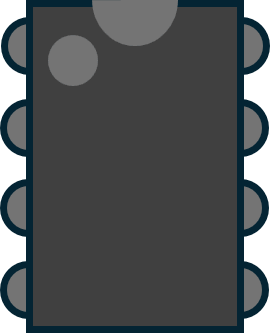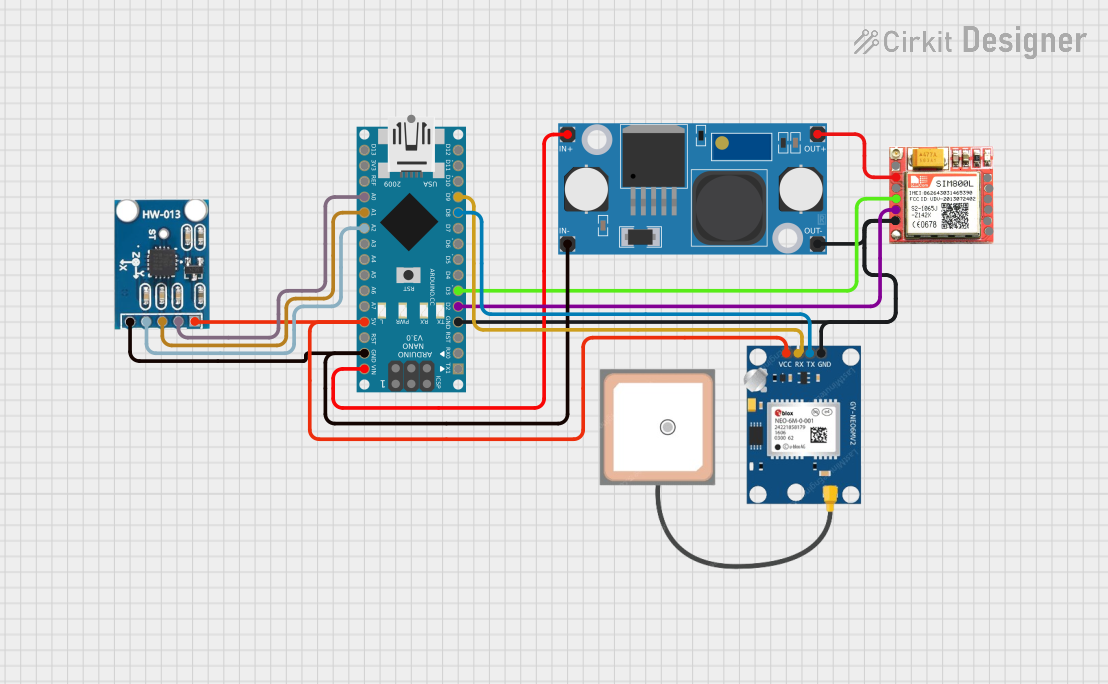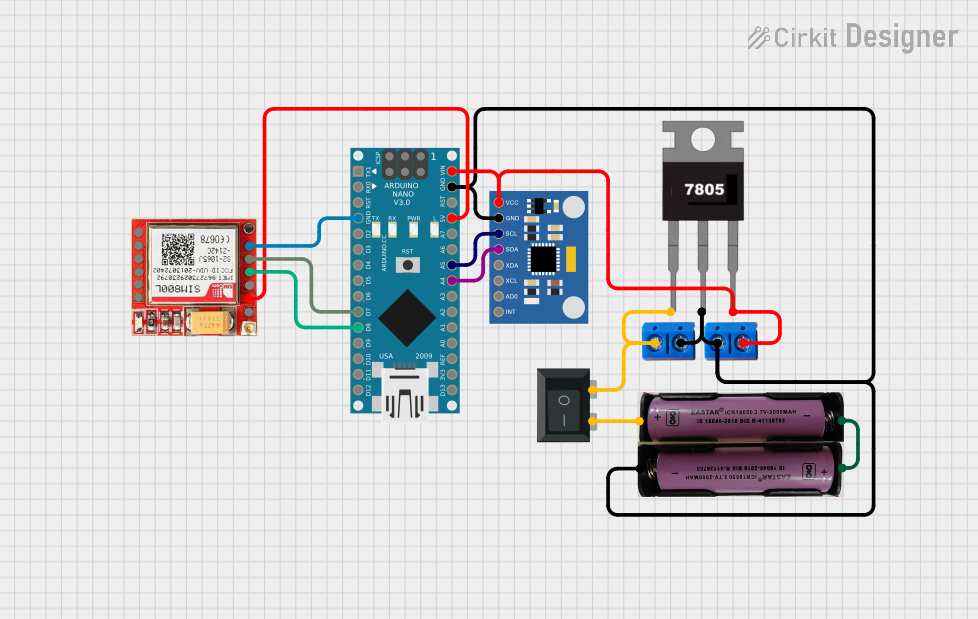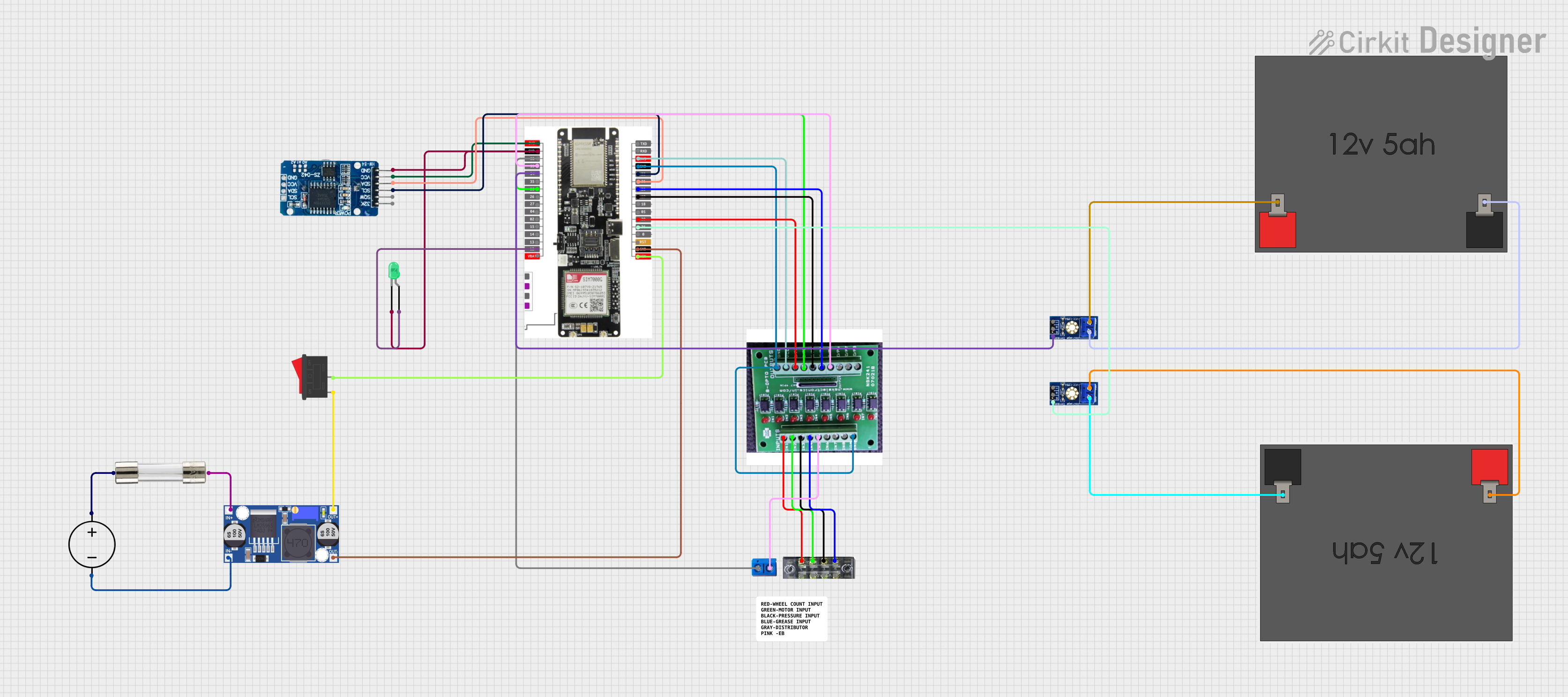
How to Use INA126P or AD623ANZ: Examples, Pinouts, and Specs

 Design with INA126P or AD623ANZ in Cirkit Designer
Design with INA126P or AD623ANZ in Cirkit DesignerIntroduction
The INA126P is a low-power, precision instrumentation amplifier designed for applications requiring accurate, low-noise signal amplification. It features a high common-mode rejection ratio (CMRR) and low offset voltage, making it ideal for amplifying small differential signals in the presence of large common-mode voltages. The gain of the INA126P can be easily set with a single external resistor, providing flexibility for various applications.
Explore Projects Built with INA126P or AD623ANZ

 Open Project in Cirkit Designer
Open Project in Cirkit Designer
 Open Project in Cirkit Designer
Open Project in Cirkit Designer
 Open Project in Cirkit Designer
Open Project in Cirkit Designer
 Open Project in Cirkit Designer
Open Project in Cirkit DesignerExplore Projects Built with INA126P or AD623ANZ

 Open Project in Cirkit Designer
Open Project in Cirkit Designer
 Open Project in Cirkit Designer
Open Project in Cirkit Designer
 Open Project in Cirkit Designer
Open Project in Cirkit Designer
 Open Project in Cirkit Designer
Open Project in Cirkit DesignerCommon Applications
- Medical instrumentation (e.g., ECG, EEG)
- Strain gauge and load cell amplifiers
- Thermocouple signal conditioning
- Data acquisition systems
- Industrial process controls
Technical Specifications
Key Specifications
| Parameter | Value |
|---|---|
| Supply Voltage Range | ±2.25V to ±18V or 4.5V to 36V |
| Input Offset Voltage | 250 µV (max) |
| Input Bias Current | 5 nA (typical) |
| Common-Mode Rejection Ratio | 94 dB (min) |
| Gain Range | 5 to 10,000 (set by resistor) |
| Bandwidth (Gain = 100) | 200 kHz |
| Quiescent Current | 175 µA (typical) |
| Operating Temperature Range | -40°C to +85°C |
Pin Configuration and Descriptions
The INA126P is an 8-pin dual in-line package (DIP). The pinout is as follows:
| Pin Number | Name | Description |
|---|---|---|
| 1 | RG | Gain-setting resistor connection |
| 2 | -IN | Inverting input |
| 3 | +IN | Non-inverting input |
| 4 | V- | Negative power supply (or ground for single-supply) |
| 5 | REF | Reference voltage input (sets output baseline) |
| 6 | OUT | Amplifier output |
| 7 | V+ | Positive power supply |
| 8 | RG | Gain-setting resistor connection |
Usage Instructions
How to Use the INA126P in a Circuit
- Power Supply: Connect the INA126P to a dual power supply (e.g., ±5V) or a single power supply (e.g., 5V and ground). Ensure the supply voltage is within the specified range.
- Input Connections: Connect the differential signal to the
+IN(pin 3) and-IN(pin 2) pins. The common-mode voltage should remain within the input range of the amplifier. - Gain Setting: Use a resistor between the two
RGpins (pins 1 and 8) to set the gain. The gain is calculated as: [ G = 1 + \frac{50,000}{R_G} ] For example, a 10 kΩ resistor will set the gain to 6. - Reference Voltage: Connect the
REFpin (pin 5) to a reference voltage. For single-supply operation, this is typically half the supply voltage to center the output swing. - Output: The amplified signal will appear at the
OUTpin (pin 6). Ensure the load connected to the output does not exceed the drive capability of the amplifier.
Important Considerations and Best Practices
- Use precision resistors for the gain-setting resistor to ensure accurate and stable gain.
- Decouple the power supply with capacitors (e.g., 0.1 µF ceramic and 10 µF electrolytic) close to the power pins to reduce noise.
- Avoid exceeding the input common-mode voltage range to prevent distortion or malfunction.
- For single-supply operation, ensure the input signal and reference voltage are within the allowable range.
Example: Connecting to an Arduino UNO
The INA126P can be used to amplify small signals for an Arduino UNO's analog input. Below is an example of interfacing the INA126P with a load cell:
Circuit Connections
- Connect the load cell's differential output to
+IN(pin 3) and-IN(pin 2). - Use a 10 kΩ resistor between
RGpins (pins 1 and 8) to set the gain to 6. - Connect
REF(pin 5) to 2.5V (e.g., using a voltage divider from the Arduino's 5V supply). - Connect
OUT(pin 6) to an analog input pin on the Arduino (e.g., A0). - Power the INA126P with the Arduino's 5V and GND pins.
Arduino Code Example
const int analogPin = A0; // Analog pin connected to INA126P output
float voltage = 0.0; // Variable to store the measured voltage
float referenceVoltage = 5.0; // Arduino's reference voltage
void setup() {
Serial.begin(9600); // Initialize serial communication
}
void loop() {
int adcValue = analogRead(analogPin); // Read the analog input
voltage = (adcValue / 1023.0) * referenceVoltage;
// Convert ADC value to voltage
Serial.print("Voltage: ");
Serial.print(voltage, 3); // Print voltage with 3 decimal places
Serial.println(" V");
delay(500); // Wait for 500 ms before the next reading
}
Troubleshooting and FAQs
Common Issues and Solutions
No Output Signal:
- Verify the power supply connections and ensure the voltage is within the specified range.
- Check the input signal and ensure it is within the common-mode voltage range.
- Confirm the gain-setting resistor is properly connected.
Output Saturation:
- Ensure the input signal and reference voltage are within the allowable range.
- Reduce the gain if the output signal exceeds the supply voltage.
Excessive Noise:
- Use proper decoupling capacitors on the power supply pins.
- Minimize the length of input signal wires to reduce noise pickup.
Incorrect Gain:
- Double-check the value of the gain-setting resistor.
- Use precision resistors to improve accuracy.
FAQs
Q: Can the INA126P operate with a single power supply?
A: Yes, the INA126P can operate with a single supply. Connect V- to ground and ensure the input signal and reference voltage are within the specified range.
Q: What is the maximum gain I can achieve with the INA126P?
A: The maximum gain is approximately 10,000, but practical limitations such as bandwidth and stability should be considered.
Q: How do I calculate the required gain-setting resistor?
A: Use the formula ( R_G = \frac{50,000}{G - 1} ), where ( G ) is the desired gain.
Q: Can I use the INA126P for AC signals?
A: Yes, the INA126P can amplify AC signals. Ensure proper coupling and biasing for single-supply operation.